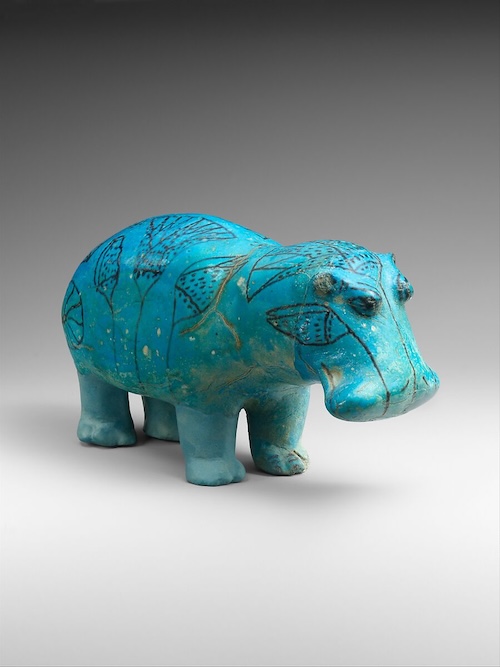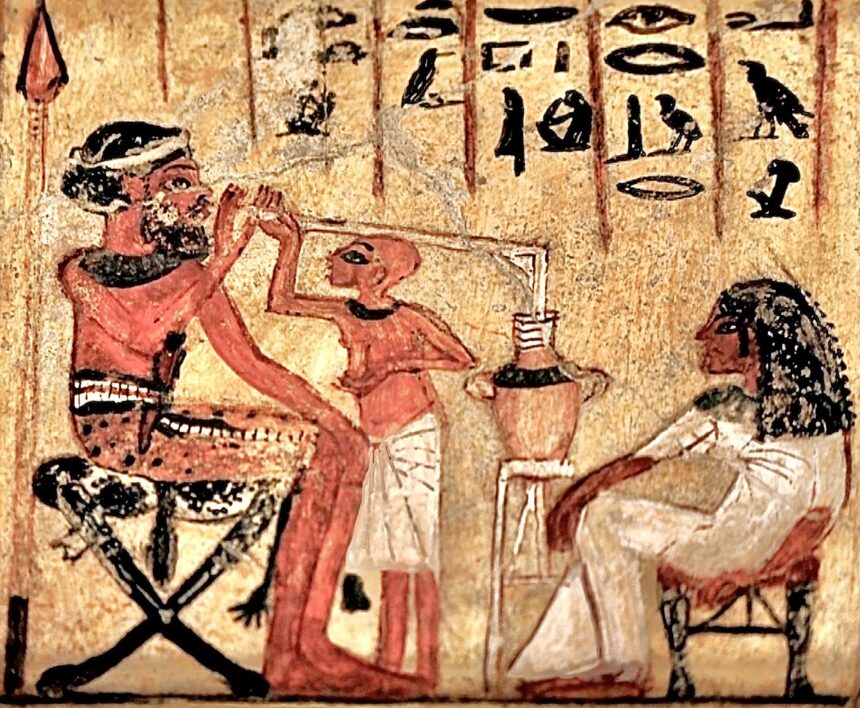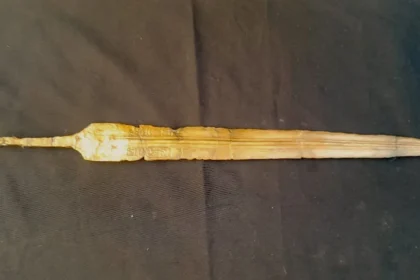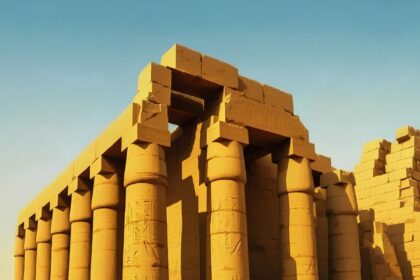Beer with Lumps
The Egyptians had a distinctive cuisine. Most of their diet consisted of bread and beer. The latter, as is well known, is also bread, just in liquid form. However, the Egyptian version of this drink could only loosely be called a liquid.
It was made from crumbled wheat or barley underbaked bread and date juice, and this mixture was left to ferment in jars sealed with gypsum. The resulting “beer” was not only sipped through a straw but also scooped up, with people eating the porridge from the bottom. It was consumed daily—at home, while working in the fields, and even during meals.
The pyramid builders working for the pharaohs officially received part of their payment in beer. In some historical periods, it was even considered a form of currency.
Interestingly, children were also not forbidden to try it. “Eat your porridge and grow big” might have been a common refrain.
Hedgehogs for Breakfast
Egyptians ate much less meat than bread because raising livestock without large pastures was a challenging task. Studies of the remains of Pharaoh Akhenaten’s subjects, conducted by anthropologists from the University of Arkansas, show that most residents of Ancient Egypt suffered from clinical protein deficiency.
Only the wealthy could afford to indulge in beef, and pork was entirely off limits.
Pigs were considered sacred animals belonging to the god Set. Therefore, consuming pork (including bacon) was forbidden, as it was believed Set would punish those who did so.
However, it was acceptable to eat crocodiles, even though they were also sacred, as well as hippopotamuses and ostriches. All of these were considered very tasty and nutritious.
The main delicacy for Egyptians, however, was hedgehogs. They were rolled in clay and then baked in an oven. The top layer, along with the quills, was then removed, and the meat was eaten with dates and accompanied by beer.
Cleaning Teeth with Pepper and Salt
Residents of Ancient Egypt frequently experienced dental problems due to their environment and diet. Living in a land surrounded by deserts, their food contained numerous abrasives: sand from millstones mixed with flour during milling and stone particles from dishes that got into the dough. Consequently, their bread was gritty and harsh on their teeth.
Naturally, chewing food containing sand was detrimental to oral health.
The situation was even worse for wealthy Egyptians, who consumed very sweet foods. They mixed honey with many dishes, ate dates frequently, and washed their meals down with pomegranate juice. It was believed that food that puckered the mouth was a delicacy for affluent citizens. As a result, tooth decay became a common occurrence.
Of course, Egyptians sought to address this issue and cleaned their teeth as best they could. They even invented a form of toothpaste, or rather, a powder. It consisted of crushed rock salt, pepper, dried iris flower, and mint. This mixture was moistened with saliva and rubbed directly onto the teeth. They cleaned their teeth either with their fingers or a chewed stick.
An Austrian dentist, Dr. Heinz Neumann, once prepared this powder out of academic interest, following the Egyptian recipe. After using it, he stated, “The gums hurt a lot and the mouth bled, but the breath definitely became fresher and cleaner.”
If the combination of pepper and salt doesn’t appeal to you, there’s an alternative. Try another variant that has been preserved: a mixture of powdered ox hooves, ash, burned eggshells, and pumice. Afterward, you can freshen your breath with a lozenge made of frankincense, myrrh, and cinnamon boiled in honey.
Laxatives Three Times a Month
In general, medicine in Ancient Egypt was quite strange. Many peculiar recipes for various diseases have been preserved in the papyrus found by Egyptologist Edwin Smith.
According to the doctors of that time, the root cause of most health problems was related to the intestines. Egyptians were constantly troubled by two diseases of this most important organ in the human body.
Constipation and diarrhea. Both of these ailments were supposed to be treated with laxatives.
The remedy was made from castor oil. Healers recommended that patients take it three times a month. Why so often? Prevention. To cleanse the body.
If it is clear why it was used for constipation, then why was it used for diarrhea? Apparently, the Egyptians adhered to the principle of treating like with like. The sooner everything leaves the intestines, the sooner the diarrhea will end—obviously!
Enemas from Gourds
Besides castor oil, enemas were also used. According to Pliny the Elder, the Egyptians invented them by observing how the sacred ibis bird would take water into its beak and then insert it into its anus to wash out its intestines.
It is unclear whether ibises really do this, but the Egyptians decided that regularly injecting water into the bowels was an excellent idea. According to their mythology, enemas were the favorite tool of the god Thoth.
It was not only a medical but also a hygiene procedure, just like brushing teeth.
The use of enemas is described in the Ebers Papyrus. Enemas were made from the bladder of a bull, to which a wooden tube was attached, or from a gourd. A particular type of plant, specifically the bottle gourd or Lagenaria, was also used for these purposes. Look at its shape, and you’ll understand why.
Naturally, the frequent use of laxatives, obsession with enemas, and daily beer consumption led to numerous intestinal problems, but the Egyptians considered this normal.
Beatings of Witnesses During Interrogations
In Ancient Egypt, there was a fairly developed law enforcement system. This can be judged by the preserved records of court hearings from that time. However, investigators back then did not trouble themselves much with observing any human rights.
The papyri mention that the interrogations of suspects were conducted as follows: the subject would be tied to a post and beaten on the arms and legs with sticks until they revealed everything the honest executors of the Pharaoh’s will needed to know. A scribe present during this would make a note in the record: “was beaten with a double stick” or “was beaten with rods.” Everything was meticulously documented, leaving no room for doubt.
The strangest part is that the laws allowed for such punishment not only of the criminal but also of the witnesses—just in case.
There are records showing that sons, slaves, and wives of suspects, and even those who were simply passing by, could be beaten to make sure they were not lying.
Strange Laws
Egyptians disliked prolonging investigations and interrogated witnesses directly at the trial, not before it. Before giving testimony, an oath was taken, which could vary depending on the time or the judge’s wishes.
For example, a female witness swore: “If there is evidence against me, I will be punished with a hundred lashes.” Another man stated: “If I lie, all my servants and property will be taken from me.” Poor laborers who had nothing to confiscate were forced to tell the truth “under threat of injury.”
If a suspect declared themselves innocent even after being beaten with a stick, they were released. In one court record, a man named Amenhau was interrogated at a trial.
Despite the beatings, he continued to insist, “I saw nothing! Everything I have seen, you have already heard from my lips!”
Amenhau was released, but despite this, a note was left next to his name in the papyrus: “a great criminal.” Presumption of innocence? No, never heard of it.
Human Cat Toilets
It is well known that Ancient Egyptians loved cats. The goddess Bastet patronized the furry creatures, and she did not tolerate jokes. She could stop protecting them from evil spirits and, most importantly, from mice, which could eat the harvest—what would you do then? So, they cared for their cats so much that they even mourned after their death, shaving their eyebrows as a sign of grief.
However, it seems that the Egyptians did not come up with toilets for their beloved pets. At least, archaeologists have not discovered anything of the sort yet.
On the other hand, the Egyptians themselves used hygienic devices that we would now consider a cat litter box.
Boxes filled with sand and other, less pleasant, contents were emptied daily, and the filler was replaced with clean sand. Wealthy people had wooden or even stone seats installed over the containers, while the poor had to make do without them.
However, they never came up with a water-based sewage system to carry away waste. The Romans were the first to invent such a system.
Strange Wigs and Wax Hats
Many Egyptians, including women, shaved their heads bald. The reason was simple: to avoid lice. For priests and priestesses, the procedure was mandatory because the gods demanded not only moral but also physical cleanliness.
But walking with a bald head in the heat was not particularly pleasant—it could easily lead to sunstroke. So, the Egyptians wore a variety of wigs. The poorer wore wigs made from sheepskin and plant fibers, while the wealthy could afford luxurious wigs made of natural hair.
Making wigs was quite a profitable profession and was traditionally practiced by women.
Nevertheless, fashion for them would periodically fade away, and people would grow their own hair and create intricate hairstyles. For example, they would wrap curls around a stick, coat them with mud, and wait for it to dry. Then, they would remove it, shake off the mud, and get a (possibly) stunning curl.
Baldness and gray hair were considered a tragedy. But the Ebers Papyrus provided a reliable remedy for hair loss: one had to rub rotten donkey liver into the scalp, and everything would be fine. To prevent graying, a dye made from black calf’s blood with oil was highly effective. It smelled, of course, but lotus perfume was supposed to help.
But the strangest invention of the Egyptians was the aromatic cones. These were peculiar headpieces made of a mixture of oil, resin, fat, or wax with fragrant myrrh. They would melt in the heat and emit a strong aroma. Apparently, Egyptians wore them to demonstrate their status; they were worn by those close to the Pharaoh and priests.
Women especially fancied these items, but men could also wear a wax cone on occasion. After all, it is so pleasant and beautiful when wax and oil trickle down your head.
Battles with Hippos

These animals were a serious problem for the inhabitants of Ancient Egypt: they would devastate crops on the banks of the Nile, capsize fishing boats, and kill people who tried to drive them away.
A rampaging hippo is a monster beside which alligators are just a trifle. And such a beast could wander onto your land at any moment because they swam wherever they wanted, and no fences could stop them.
It’s no surprise that Egyptians considered hippos a symbol of chaos and one of the worst incarnations of the evil god Seth.
Therefore, hunting these animals and their extermination were considered highly useful deeds, often undertaken by wealthy Egyptians. Especially by Pharaohs, because a god-like king who personally destroyed a symbol of evil deserved the adoration of his people.
Egyptians did not have weapons that could kill a hippo from a distance: its skin was thick, a bow was unlikely to penetrate, and it was not easy to hit the eye. Therefore, they used spears.
The hippopotamus had to be provoked into aggression by shouting various Ancient Egyptian curses and wishing it misfortunes in the afterlife. And when it opened its mouth and roared in response, the weapon was thrown directly into it.
As you can imagine, this was no easy task, because a hippo bite had truly catastrophic consequences for the human body. And the hunt did not always end well. For instance, Pharaoh Menes died from injuries inflicted by this beast.
But if the giant could be felled, the feast was magnificent: these creatures had plenty of meat and fat. Pharaohs who did not want to hunt hippos would hunt ostriches instead. But that was far less honorable.






